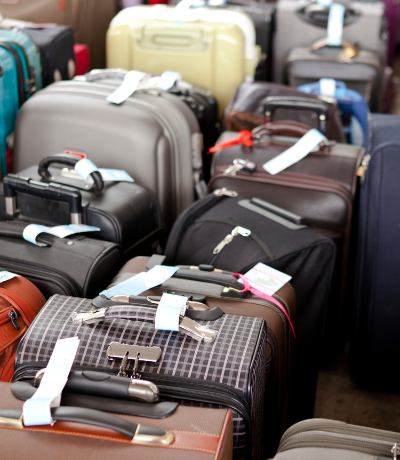How to safely lose your luggage
15 July 2022
The only way to avoid lost luggage is to carry it on, which isn’t convenient on longer trips or when taking more than a tiny amount of liquids. Plus, you can’t always be sure you’ll be able to carry your bags onboard the aircraft—sometimes the overhead bins are full by the time your group is called.
A recent Air Canada passenger planned to carry her bag but was forced to check it because it didn’t fit. Then the airline lost it!
Even if you carefully measure your bag and are sure it will fit on the airplane you think you’re taking, the airline could make a last-minute switch in planes and your bag may not fit the new plane. It can happen too—plane switches are more common now that the airlines are canceling flights because of labor shortages, striking workers, and ongoing COVID issues.
Unfortunately, the situation doesn’t appear to be likely to get better soon. Heathrow recently apologized to passengers affected by baggage issues at the same time it was telling airlines to stop selling summer tickets!
True story: some friends of mine returned from a trip to Germany last weekend, and they were one bag short. Thanks to the airtag in the bag, they have been able to watch their wayward luggage move around the Frankfurt airport. It hasn’t been returned yet, but at least they have an idea where it’s located.
Even in the best of travel times (which is not now), luggage gets lost and it doesn’t have to be the end of the world. Whether you’re planning to check your bag or carry it on, here’s how to safely lose your luggage.

Decide what you can safely lose
If you plan to lose your bag, you can more easily decide what you can safely lose. For example, if you require medication and know you can replace it when you arrive, then you can lose some of it without getting into trouble.
If your bag gets lost for a day or your entire trip, it helps to remind yourself you can buy clothes, shampoo, and shoes when you arrive if you need them.
Don’t pack the irreplaceables
Sometimes when a bag is lost, it shows up a few days or weeks later. Other times, it’s gone forever. If you plan to lose your bag forever, you can more easily identify what is irreplaceable and don’t pack it.
Ideally, travelers shouldn’t pack any of these in their bags:
- Jewelry
- Family heirlooms
- Sentimental items with a story
- Cash or credit cards
- Clothing needed for time-sensitive events like a wedding
Bottom line: if it’s irreplaceable, it doesn’t get packed.
Don’t pack everything
The recommendation used to be to pack one outfit in your travel partner’s bag. With the rates of lost luggage rising, however, it’s best to have what you need in case more than one bag goes missing.
Think about what you’ll likely need for the first day or so, and put that into your backpack instead. At the very least you’ll want to have these things for every person in your group in case a bag doesn’t show up at the carousel:
- One full change of clothes
- Basic toiletries (toothbrush, contact lens solution, etc.)
- Essential medication
- Chargers for every device
If your bag does go astray, at least you’ll be comfortable. And you can start your vacation with a shopping trip!
Prepare your bag to get lost
Even if you plan to carry it on, preparing your bag to get lost may help it find its way back.
- Tear off all old tags to eliminate confusion.
- Label your luggage inside and outside and keep the checked bag stub (you’ll need it to make a lost bag claim with the airline).
- Add a phone number (with the country code) where you can be reached on your trip. Write the number really large and include the words ‘my phone number’ in a few relevant languages to help someone who’s found your bag call you.
- Decorate your bag with some color to make it easier to identify in a room full of lost bags. Wrap it with bright-colored duct tape instead of tying a ribbon on it. Ribbons can tear off; duct tape won’t.
- Take a picture of your bag post-decorating and keep it on your phone. Print it out and take it with you. If you have to report it missing, you can attach the photo with the claim form.
- Slip in a luggage tracking device. With so many lost bags, inboxes and phone lines are jammed with people trying to find them. At least you’ll be able to help the airline (if you can get through to them) locate your bag.
None of these steps will keep your bag from going missing. Not entirely anyway. If it does go missing, however, it might be easier to recover.
What airlines and passengers are doing to recover lost luggage right now
On a final note, it’s interesting to see the lengths to which airlines and passengers are going to recover their lost luggage:
- This week, Delta flew an entire plane full of bags (no passengers!) to return them to the US.
- Another passenger bought a plane ticket just to be able to search the Dublin airport for their lost luggage. They found it too.
- Hundreds of people joined a Facebook page titled Air France lost my luggage to help each other navigate the mess.
Related topics
Damian Tysdal is the founder of CoverTrip, and is a licensed agent for travel insurance (MA 1883287). He believes travel insurance should be easier to understand, and started the first travel insurance blog in 2006.
